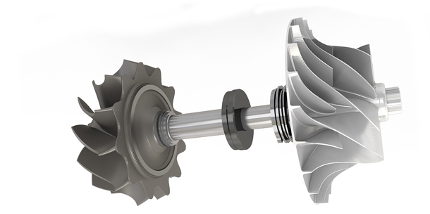In the aerospace industry, every pound counts. As environmental regulations tighten and fuel costs remain a top concern, manufacturers are constantly seeking ways to improve aircraft performance. Many are implementing lightweighting and enhancing fuel efficiency to meet these goals. However, they require a sophisticated design approach, which is where modern CAD for aerospace shines. From selecting advanced materials to simulating real-world conditions, cutting-edge tools like PTC Creo enable aerospace engineers to push the boundaries of what’s possible in modern aircraft design.
Lightweighting and Fuel Efficiency
For decades, aerospace engineers have embraced lightweighting as a core strategy for improving fuel efficiency, lowering emissions, and meeting strict sustainability targets. By using stronger yet lighter materials, manufacturers can drastically reduce drag and fuel burn. These savings not only lower operational costs but also help airlines and manufacturers meet growing demands for sustainable aviation.
Key to this process is the careful selection and application of materials:
- Aluminum Alloys: The workhorse of aerospace design, balancing strength and weight.
- Titanium and High-Strength Steels: Critical for parts demanding extreme durability.
- Composite Materials: Carbon fiber and glass fiber composites offer superior strength-to-weight ratios, enabling thinner, lighter structures without compromising safety.
Emerging materials like graphene and carbon nanotubes, along with additive manufacturing, promise even greater gains in the future.
PTC Creo: Powering Aerospace Design
Today’s aerospace design teams rely on advanced CAD tools to transform these lightweighting strategies into real-world results. PTC Creo is a leading CAD platform that empowers engineers with powerful capabilities for lightweighting and fuel efficiency improvements:
Composite Design Extensions
Creo’s Composite Design and Manufacturing Extensions allow engineers to design, analyze, and manufacture composite components. This is perfect for wings, fuselages, and interiors that demand maximum strength with minimal weight.

Topology Optimization and Simulation
Engineers can use advanced simulation and topology optimization to remove unnecessary material while maintaining structural integrity. This results in lighter, more efficient components that perform under extreme conditions.
Working with Large Assemblies
Creo makes it easier to manage massive models typical in aerospace. Engineers can load lightweight versions of large assemblies, reducing memory usage and speeding up workflows, without sacrificing accuracy.

Design Exploration
Creo’s Freestyle Design, Parametric Surfacing, and Design Exploration tools let teams rapidly explore multiple design alternatives. This supports creative solutions to achieve both aerodynamic performance and lightweight goals.
AR and Collaboration
With AR Design Share, teams can conduct immersive design reviews from anywhere, ensuring global teams stay aligned while refining designs for weight and fuel efficiency.
Integration with PLM
When used with Windchill PLM, Creo supports secure, centralized data management. Engineers can track material usage, revisions, and compliance requirements throughout the product lifecycle.
Real-World Aerospace Success Stories
These advanced CAD capabilities aren’t just theoretical; they’re transforming modern aerospace programs:
- Boeing 787 Dreamliner: Boeing used cutting-edge CAD modeling and simulation to design a wide-body aircraft with extensive composite structures, achieving dramatic weight savings and better fuel burn.
- SpaceX Falcon 9: SpaceX leverages advanced CAD and simulation to iterate rocket designs for performance and reusability, critical for reducing launch costs and supporting sustainable space operations.
- Airbus A350 XWB: Airbus employed collaborative CAD and PLM tools to design an aircraft with a lightweight composite fuselage and wings, setting new standards for efficiency and range.
CAD for Aerospace
Lightweighting and fuel efficiency are engineering imperatives that drive every aerospace innovation. By embracing modern CAD tools like PTC Creo, manufacturers gain the capabilities they need to select advanced materials, refine designs, and simulate performance with unprecedented precision. As new materials and additive manufacturing push the limits of possibility, engineers equipped with powerful CAD for aerospace will continue to lead the way. If your team is ready to create safer, more efficient, and more sustainable aircrafts, contact us today. We can discuss how your team can harness CAD to achieve lighter, stronger, and more efficient products.









